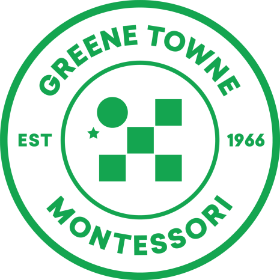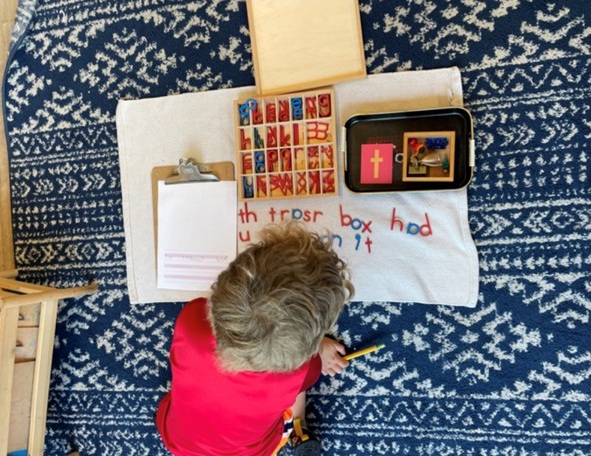
Curious about how we teach reading in Montessori?
Montessori classrooms foster strong, joyful readers through hands-on materials, meaningful lessons, and a deep respect for each child’s unique learning journey. But how exactly does this approach align with current reading research? We invite you to explore our latest blog post: “Montessori and the Science of Reading”—a parent-friendly guide to the five essential components of reading and how they are thoughtfully woven into your child’s experience from Toddler through Lower Elementary.
Interested in learning more?
Join us at May 21st GPA meeting for an overview and Q/A session with Emily Bittner, Montessori Director & Dean of Faculty.
Understanding the Building Blocks of Reading in the Montessori Classroom
Montessori classrooms are uniquely designed to support the development of strong reading skills through hands-on materials, guided practice, and joyful exploration. There are 5 essential components of reading—phonemic awareness, phonics, fluency, vocabulary, and comprehension—and each is naturally woven into your child’s daily experience in ways that align closely with the Science of Reading.
What is the Science of Reading and how do our Montessori classrooms incorporate it?
Simply put, the Science of Reading refers to a body of research from several fields (education, cognitive psychology, developmental psychology, and neuroscience) that explains how individuals learn how to read and best practices for reading instruction. This research has conclusively shown that there is a well-understood path towards learning to read fluently. This path is made up of both language comprehension and word recognition.
The Science of Reading shows us that the 5 essential components of reading must work together to create successful readers. Scarborough’s Reading Rope helps visualize this:
- Phonemic Awareness & Phonics feed into Word Recognition
- Vocabulary & Comprehension are part of Language Comprehension
- Fluency bridges the two, supporting both decoding and understanding
Montessori classrooms create a rich, nurturing environment where reading skills emerge naturally and joyfully and where direct, individual instruction guides the process. Each material and interaction helps children build not just the mechanics of reading, but a deep connection to language and communication that will support them for life.
Montessori lessons and materials both isolate these skills and intertwine them naturally throughout the child’s day (just as Scarborough’s rope suggests). Our approach aligns with this research and goes a step further by honoring each child’s pace, interests, and joy of discovery.
A Closer Look at the 5 Components
- Phonemic Awareness: Hearing the Sounds in Words (ages 3–6)
Phonemic awareness is the foundation of reading. It’s a child’s ability to hear and manipulate the individual sounds in spoken words. Before children can read or write, they need to recognize that words are made up of sounds. By helping children recognize and differentiate the sounds they hear, we are scaffolding their later ability to read.
- Phonics: Connecting Sounds to Symbols (ages 4-7)
Once children can hear sounds in words, phonics helps them connect those sounds to written letters. Phonics is the bridge between spoken and written language. Recognizing letter sound correspondence is a pivotal moment in a child’s early reading development.
- Fluency: Reading with Ease and Expression (ages 6-9)
Fluency means being able to read smoothly, accurately, and with expression. As children become more confident readers, fluency helps them enjoy and understand what they read.
- Vocabulary: Growing a Love for Words (ages 0 & up; instructional focus ~5–12)
A rich vocabulary helps children express themselves clearly and understand more of what they read and hear. Vocabulary develops through everyday conversation, storytelling, and exploration.
- Comprehension: Understanding and Connecting with Text (ages 5 & up)
Comprehension is the ultimate goal of reading—understanding and engaging with what is read. It begins with listening and grows as children develop their reading skills.
5 Components of Reading in the Montessori Context
In the Montessori context, the five components are not taught in isolation but are thoughtfully integrated into daily experiences across all developmental levels. The breakdown below highlights how each component is supported in the Toddler, Primary, and Lower Elementary environments.
1. Phonemic Awareness | Hearing and playing with the sounds in words
- Toddler (0–3): Early exposure through songs, rhymes, and sound games builds listening skills.
- Primary (3–6): Direct work with sound games, rhyming, syllable clapping, and the Sound Game leads to strong phonemic awareness.
- Lower Elementary (6–9): Reinforcement through spelling, writing, and word analysis activities.

2. Phonics | Matching sounds to letters to decode words
- Primary (3–6): Begins with sandpaper letters, moving to moveable alphabet and phonetic reading with CVC (consonant-vowel-consonant) words.
- Lower Elementary (6–9): Phonics continues with more advanced patterns (blends, digraphs, word families), often integrated into spelling and grammar work.
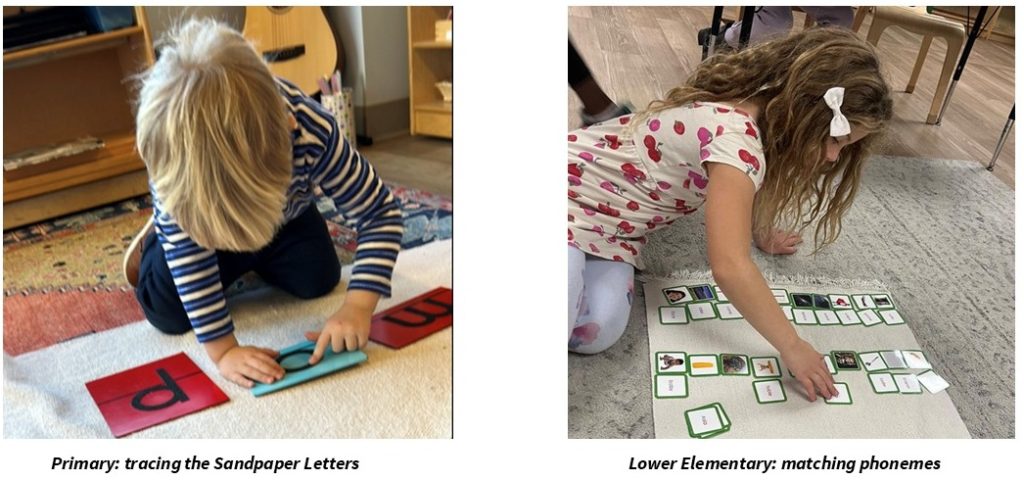
3. Fluency | Reading smoothly with expression and understanding
- Primary (3–6): Emerges in later primary as children begin to read short books with increasing confidence.
- Lower Elementary (6–9): Fluency is developed through regular reading practice, reading aloud, and self-selected reading materials.
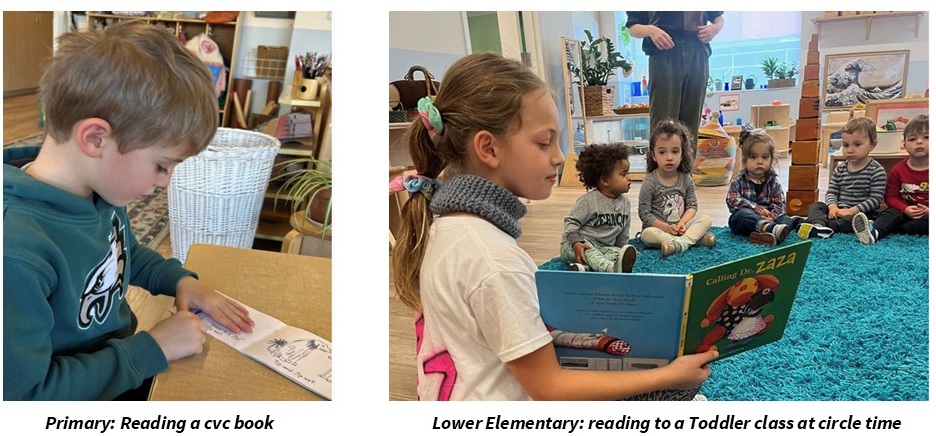
4. Vocabulary | Understanding and using a rich set of words
- Toddler (0–3): Rapid oral vocabulary growth through naming objects, books, and conversation.
- Primary (3–6): Enriched through classified cards, real objects, stories, and conversation.
- Lower Elementary (6–9): Grows through cultural lessons, reading, writing, and word study work.

5. Comprehension | Understanding and interpreting what is read
- Primary (3–6): Begins with oral stories and progresses to picture books and early readers; comprehension is checked through conversation and sequencing.
- Lower Elementary (6–9): Deepens with chapter books, research, discussions, and narrative work like story mapping and summaries.
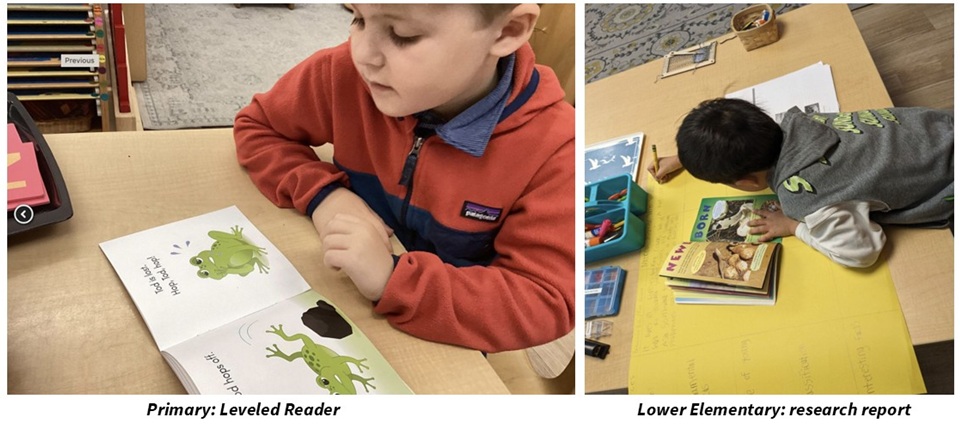
Summary Chart of Reading Components and Classroom Activities by Level
| Reading Component | Toddler (0–3) | Primary (3–6) | Lower Elementary (6–9) |
| Phonemic Awareness | Exposure to songs, rhymes, and sound games builds listening and sound discrimination skills. | Children play sound games and explore beginning phonemes, preparing for decoding. | Reinforced through spelling, writing, and word analysis work. |
| Phonics | Indirect preparation through vocabulary and sound exposure. | Begins with sandpaper letters and moveable alphabet to match sounds to symbols. | Continues with phonograms, digraphs, and spelling patterns in word study. |
| Fluency | Not yet developed—focus is on language exposure. | Emerges in late Primary as children begin reading simple books. | Fluency grows through regular reading, read-alouds, and book choice. |
| Vocabulary | Rapid oral language development through naming, books, and conversation. | Enriched through classified cards, real-world vocabulary, and storytelling. | Expanded through reading, research, and cultural curriculum. |
| Comprehension | Emerges in conversation and understanding of routines and stories. | Supported through storytelling, book reading, and sequencing activities. | Deepens through chapter books, discussions, and narrative writing. |
